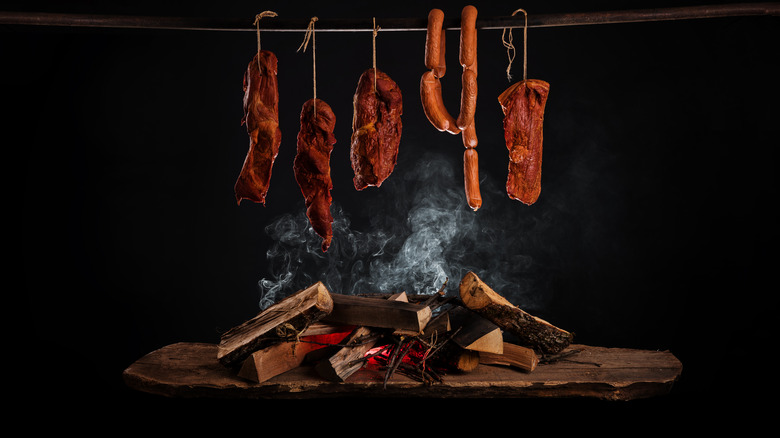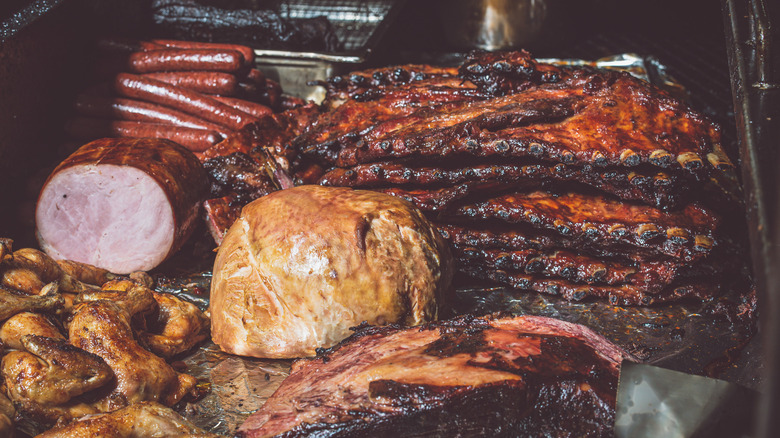We've Been Smoking Meats Long Before Fourth Of July Barbecues
While smoked meats may feature prominently in modern Fourth of July barbecue bashes, their history could be lost in the haze of time. Smoking meat seems to date back to prehistoric times and may be one of the oldest methods for preserving foods. The reason why it works is that numerous chemical compounds found in smoke prevent bacteria from growing and, in so doing, keep it from spoiling.
We may imagine our earliest ancestors sitting around a fire chomping down on ginormous smoked mammoth ribs, but some speculate that fish may have been the first type of meat to be smoked. One possibility is that smoke was employed to drive away flies from a fresh catch, and what do you know? Not only did this make it taste better, but smoked fish also lasted much longer.
The original paleo diet was likely made of whatever foods prehistoric humans could source regionally. However, archaeologists have dug up proof that fish smoking was a big business in Poland during the 9th century. Similarly, pork has also long been a popular meat for smoking. The reason pork and fattier types of fish take to this process so well is that smoke doesn't allow fat to oxidize and spoil, which was a concern before refrigeration and other methods of preserving food were discovered.
American barbecue evolved from Indigenous peoples
So, how did we get from ancient smokehouses to throwing down with Bobby Flay and modern Fourth of July feasts? There are several missing links, but pit-smoked barbecuing seems to have started with Indigenous peoples. According to food historian Adrian Miller, whose book "Black Smoke: African Americans and the United States of Barbecue" provides a detailed overview of how American barbecue came to be, Native Americans have long been cooking meat using smoke from fire pits. One such group was the Taíno, a Caribbean people whose language may have lent us the modern word for barbecue: "Barabicu" means "sacred fire pit."
The next step in the barbecue food chain, as the title of Miller's book indicates, is with enslaved Africans, who observed the Indigenous cooking process and adapted it for their own use. Eventually, others noticed that they were on to a good thing. By the 1800s, fire-pit cooking, with its combination of slow roasting and smoking, was pretty well-established. As the 19th century rolled over into the 20th, different regional barbecue styles evolved to the point where we now have numerous types from which to choose, ranging from Kansas City burnt ends to vinegary North Carolina pulled pork to brisket cooked Texas-style. This, in turn, allows us to celebrate the holiday with the most American of all traditions: arguing over which kind of barbecue is best.

